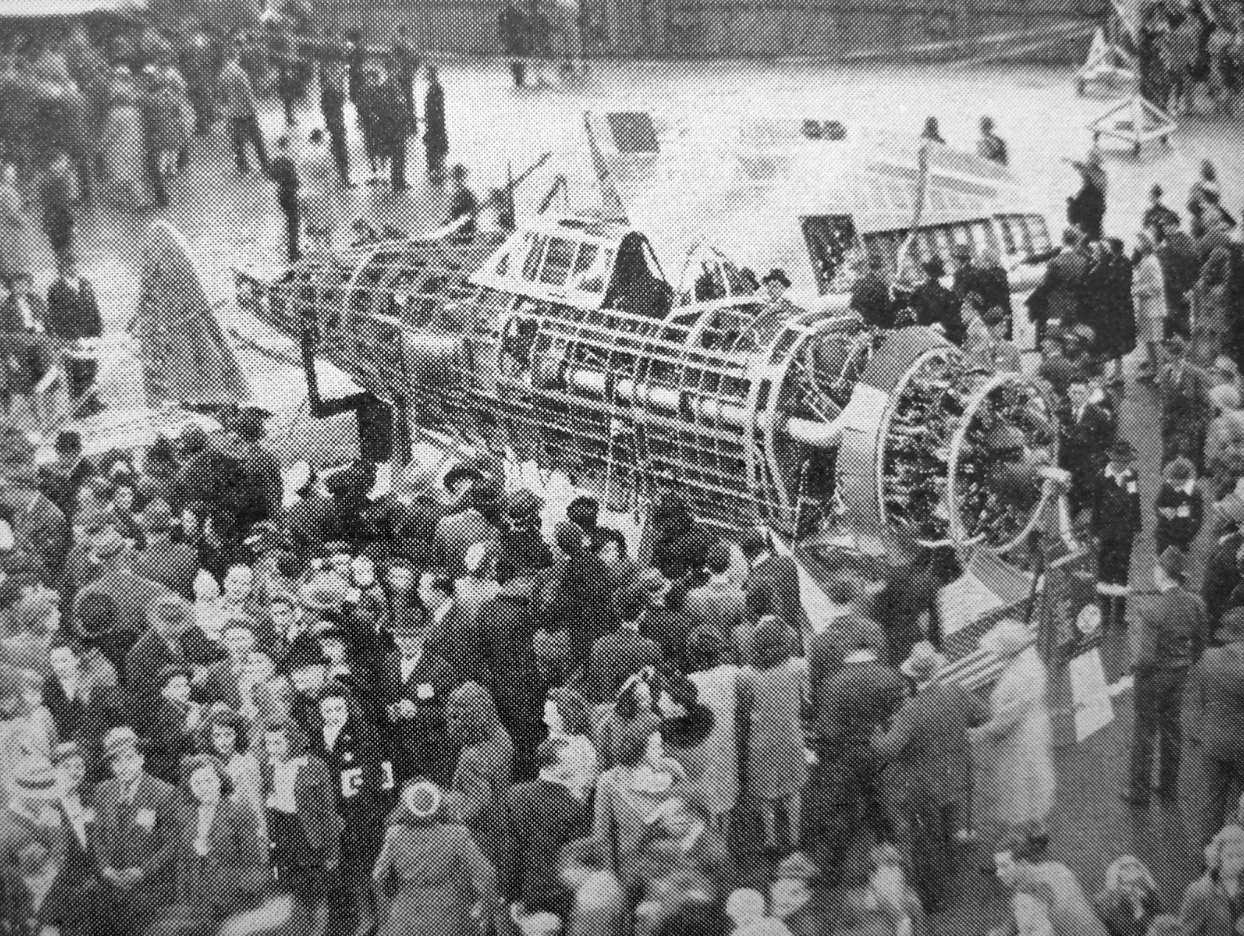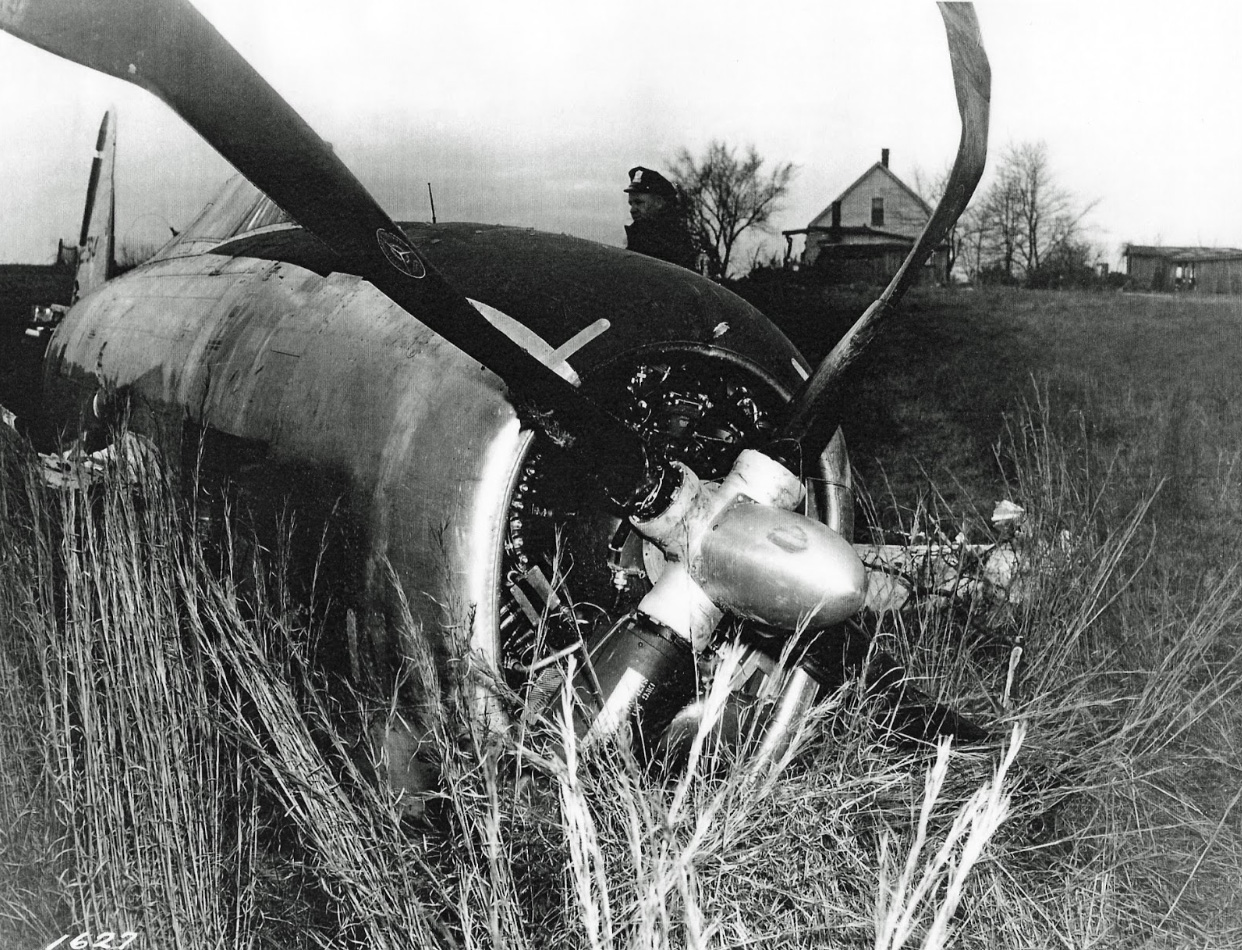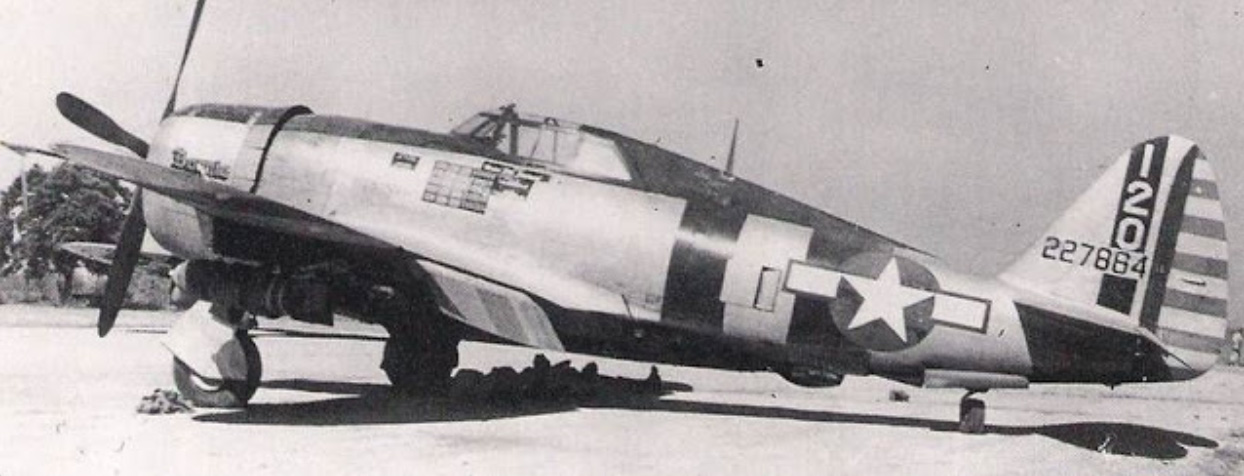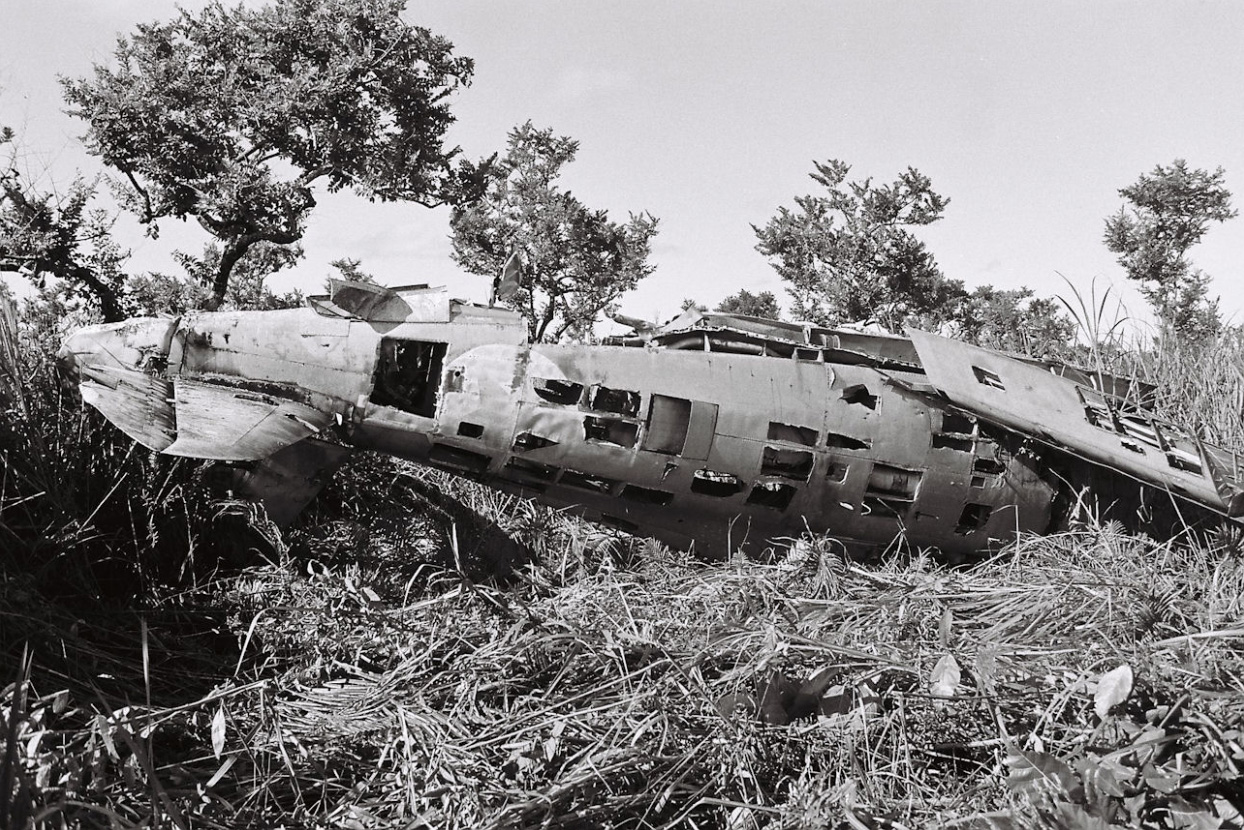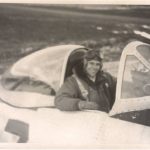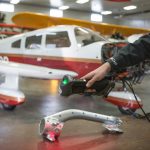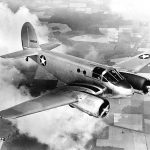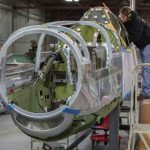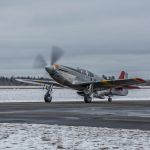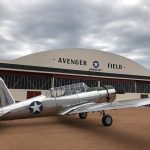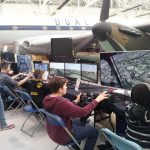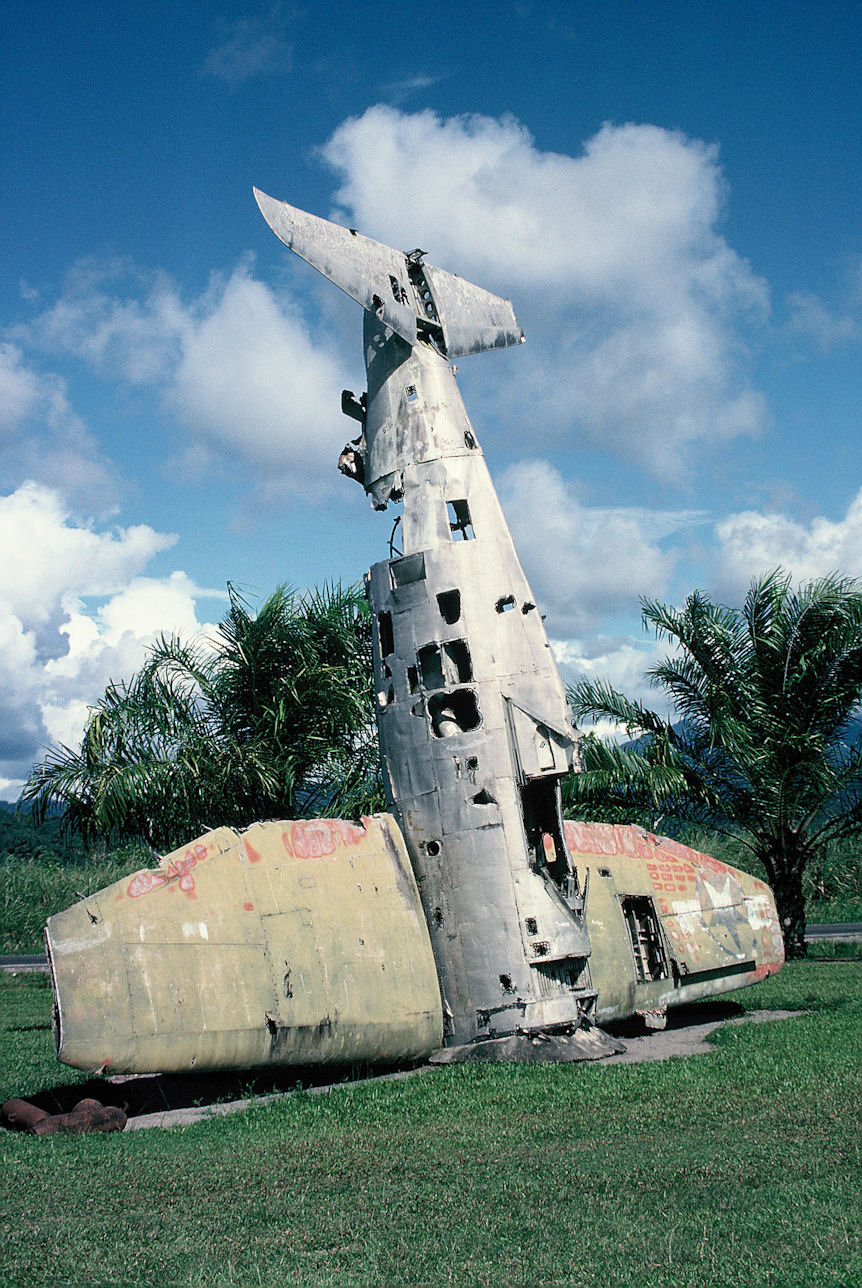
As many of our readers will know, AirCorps Aviation has been restoring a rare, razorback version of the Republic P-47 Thunderbolt for the Texas Flying Legends Museum. This combat veteran Thunderbolt is P-47D 42-27609, and we will be filing periodic progress reports on her restoration in the coming months. However Chuck Cravens, AirCorps Aviation’s historian, has documented what is known so far of the airframe’s history. We felt this deserved a standalone article before we bring you her current status.
P-47D-23RA 42-27609 5th Air Force P-47 History
by Chuck Cravens
P-47D Thunderbolt 42-27609 was recovered from Papua New Guinea in the 1990s and is a veteran of the war in the South West Pacific Theatre. She rolled off Republic’s production line in Evansville, Indiana during the second week of March, 1944, and the Army Air Force accepted her as AAF 42-27609 on March 18th, 1944.
Her squadron history is somewhat cloudy at present, because there are currently no known wartime photographs of 42-27609. Following her acceptance by the Army, the 8th Ferry Service flew 42-27609 from Evansville to Midland, Texas municipal airport. With another stop at Long Beach, she eventually arrived at NAS Alameda on March 29th, 1944. NAS Alameda was an important military logistics center at the time, having an associated naval berth which allowed the easy transfer of aircraft onto escort carriers for shipment to the Pacific Theatre. Our Thunderbolt boarded the carrier USS Prince William (CVE-31) as part of a contingent of fifteen P-47Ds, alongside seventeen P-38-5s, sixteen A-20-6s, and three P-61As. On April 17th, 1944 at 1707 hours, the USS Prince William and her precious cargo departed NAS Alameda’s carrier pier for the voyage across the Pacific to Australia.
Despite what her Individual Aircraft Record Card indicates, 42-27609 did not arrive in Brisbane on May 6th, 1944. The USS Prince William’s log entry of May 5th, 1944 reads: “in accordance with ComThird Fleet’s order’s (sic) changed destination to Townsville, Australia.” At 1830 hours on May 7th, 1944, the USS Prince William moored at the Platypus Channel Eastern Breakwater Pier in Townsville on the north eastern coast of Queensland, Australia, and commenced unloading her aircraft.
Townsville is much closer to New Guinea than Brisbane, so the Navy likely diverted the Prince William to transport her aircraft where they were of greatest need. New Guinea was the site of intense fighting during late April, 1944. Once disembarked at Townsville, 42-27609 was readied for combat, most likely by the 4th Air Depot at Garbutt Field. From there, the trail goes cold until 42-27609 was written off at Dobodura, Girau Airfield, Papua New Guinea on September 18th, 1944.
Unfortunately, we have not been able to locate an accident report, nor can we determine which Fighter Group or Squadron the aircraft served in. On the date when 42-27609 was condemned, most of the Fifth Air Force had already moved on to the Philippines. Based on the destination of the P-47D-23s with serial numbers closest to ours, the most likely assignment would be to one of the 348th Fighter Group’s squadrons or the 58th Fighter Group. Since 42-27608 was the first of this sequence in New Guinea, and since we know that 15 P-47s went over on the Prince William, then maybe they all came from Evansville in a sequentially-serialled batch.
This theory would have the shipment comprise Thunderbolts 42-27608 through 42-27624. However, there are a couple of discrepancies in this idea as ‘614 was written off in a crash at Evansville, and ‘616 went to the Brazilian Air Force in Italy. One other possibility is an assignment to the 201st FG of the Mexican Expeditionary Air Force, which was attached to the USAAF 58th FG. This is highly unlikely, because the 201st didn’t arrive in the SW Pacific Theater until the spring of 1945, and their first base was in the Philippines. If one assumes that sources are reliable, the Mexican connection is an impossibility.
42-27605 – P-47D 82 MX-R SPRAY, DELROY E 8th AF
42-27606 – P-47D 82 MX-A 8th AF 2 seater
42-27607 – P-47D 82 MX-G Stark Lt. Richard D Lost in this a/c 3 Sept 44 – POW
42-27608 – 342nd FS, 348th FG
42-27609 – abandoned Dobodura 6-16-44
42-27612 – 342nd FS 348th FG 5th AF
42-27613 – 341st FS 348th FG 5th AF
42-27614 – 44/03/13 – crash EVANSVILLE AP, IN GENOVESE, JOSEPH written off
42-27615 – 201st FS, Mexican AF, attached to 58th FG
42-27616 – mentioned in 57th Bomb Group mission report as Brazilian AF in Italy
42 27617 – 460th FS, 348th FG
42-27621 – 341st FS
42-27624 – 58th FG
42-27625 – 58th FG
Possible color schemes
58th Fighter Group and 348th Fighter Group squadrons
For bare aluminum P-47s, both Fighter Groups used the overall scheme shown here on Bill Dunham’s 460th FS P-47D, Bonnie. The markings include black fuselage bands, a blue rudder leading edge and red and white rudder horizontal stripes. The black turtle deck seems to be unique to Dunham’s aircraft.
58th Fighter Group …
| Squadron | Dates in combat | Colors and markings |
| 69th Fighter Squadron | 2/44-12/45 | the 69th P-47s carried a red horizontal cowl and aircraft codes A5-A33 on the side of the fuselage |
| 310th Fighter Squadron | 2/44-12/45 | the 310th used a yellow cowl stripe and Aircraft codes H43-H66 |
| 311th Fighter Squadron | 2/44-12/45 | the 311th had a blue cowl stripe and aircraft codes V67-V69 |
348th Fighter Group
| Squadron | Dates in combat | Colors and markings |
| 340th Fighter Squadron | 6/43-3/45 | Red vertical stabilizer stripe, aircraft code numbers 1 -25 within the stripe on the vertical |
| 341st Fighter Squadron | 6/43-3/45 | Yellow vertical stabilizer stripe, aircraft code numbers 26-50 within the stripe on the vertical |
| 342nd Fighter Squadron | 6/43-3/45 | Blue vertical stabilizer stripe, aircraft code numbers 50-75 within the stripe on the vertical |
| 460th Fighter Squadron | 9/44-3/45 | Black vertical stabilizer stripe, aircraft code numbers 100-129 within the stripe on the vertical |
One thing in favor of the 58th FG is that they were stationed for an extended period at Dobodura, when the base was a major maintenance and resupply facility. The most probable explanation for her condemnation in New Guinea is that she was worn out from heavy combat, and more or less obsolescent. The newer bubble canopied P-47D-25s and subsequent models were arriving in sufficient numbers to allow squadrons to re-equip. Older, razorback P-47s would likely have been shunted aside for parts reclamation if even the slightest airworthiness issue arose, be it technical, accident, or combat damage related. Whatever the cause, the Thunderbolt’s carcass remained at Dobodura for the next several decades, slowly becoming more derelict as passers by picked over her bones.
Charles Darby, the noted Southwest Pacific WWII wreck expert and partner in Pacific Aircraft Ltd., first examined the wreck of 42-27609 in 1972 and documented the aircraft photographically as part of his regional survey of potentially salvageable warbirds.
The Historical Aircraft Restoration Society in Australia recovered the P-47 from Papua New Guinea in the late 1990s. Much later, in 2011, Texas Flying Legends Museum, with the assistance of AirCorps Aviation, made a deal to acquire 42-27609. They had her transported to AirCorps Aviation’s facility in Bemidji, Minnesota, where she is now under active restoration. While the restoration is still in the early stages, roughly 41% of the airframe parts have been restored, rebuilt or newly fabricated and are ready for installation. Digitalization of the bill of materials by AirCorps allows us to keep track of progress accurately. That progress is also expedited by our digital scanner. We have the ability to 3D laser-scan components small and large, and this process allows us to drastically reduce the time it takes to create computer solid models for complex parts that either lack drawings or are very complicated to draw using traditional techniques.
Restoration aside, we are still trying to identify more details about the aircraft’s history. AirCorps Aviation would appreciate help with any information or photos that readers may have of 42-27609, beyond what is already available on the internet. They could prove essential to establishing which squadron this airframe served with and her wartime history. With that information, we could identify her war time pilot or pilots. Finding those men or their families is like opening the history book on this or any combat veteran warbird. Please contact me at [email protected] if you happen to find any photos or information on 42-27609 while she was in service.
Texas Flying Legends Museum’s mission reads in part: “The Texas Flying Legends Museum is dedicated to honoring past generations and inspiring the leaders of tomorrow through active display of WWII warbirds.” Restoring combat veteran P-47D-23RA 42-27609 is a great example of the museum’s commitment to that mission. When AirCorps Aviation completes her restoration, 42-27609 will join the rest of the squadron and fly regularly before the public to remind us all of the sacrifices that have kept us free. When she takes to the air again, 42-27609 will be the only Republic-built razorback Thunderbolt flying. While there are presently two Razorback’s flying, these are both Curtiss-built P-47Gs.
WarbirdsNews would like to thank Chuck Cravens for this marvelous article, and of course AirCorps Aviation for their sponsorship. Many thanks also go to Texas Flying Legends for helping keep history alive! We will have new restoration reports on the P-47 very soon!








